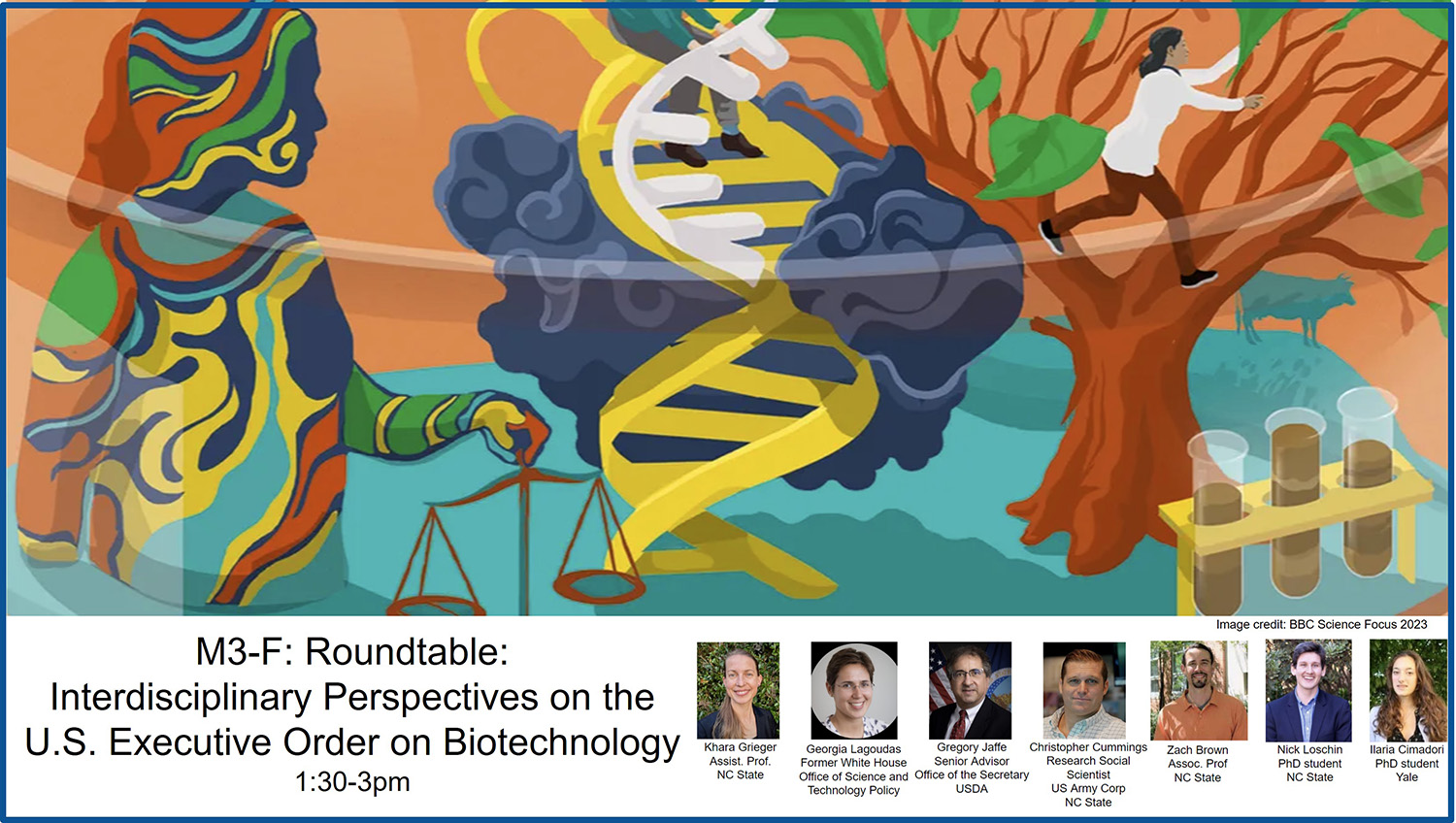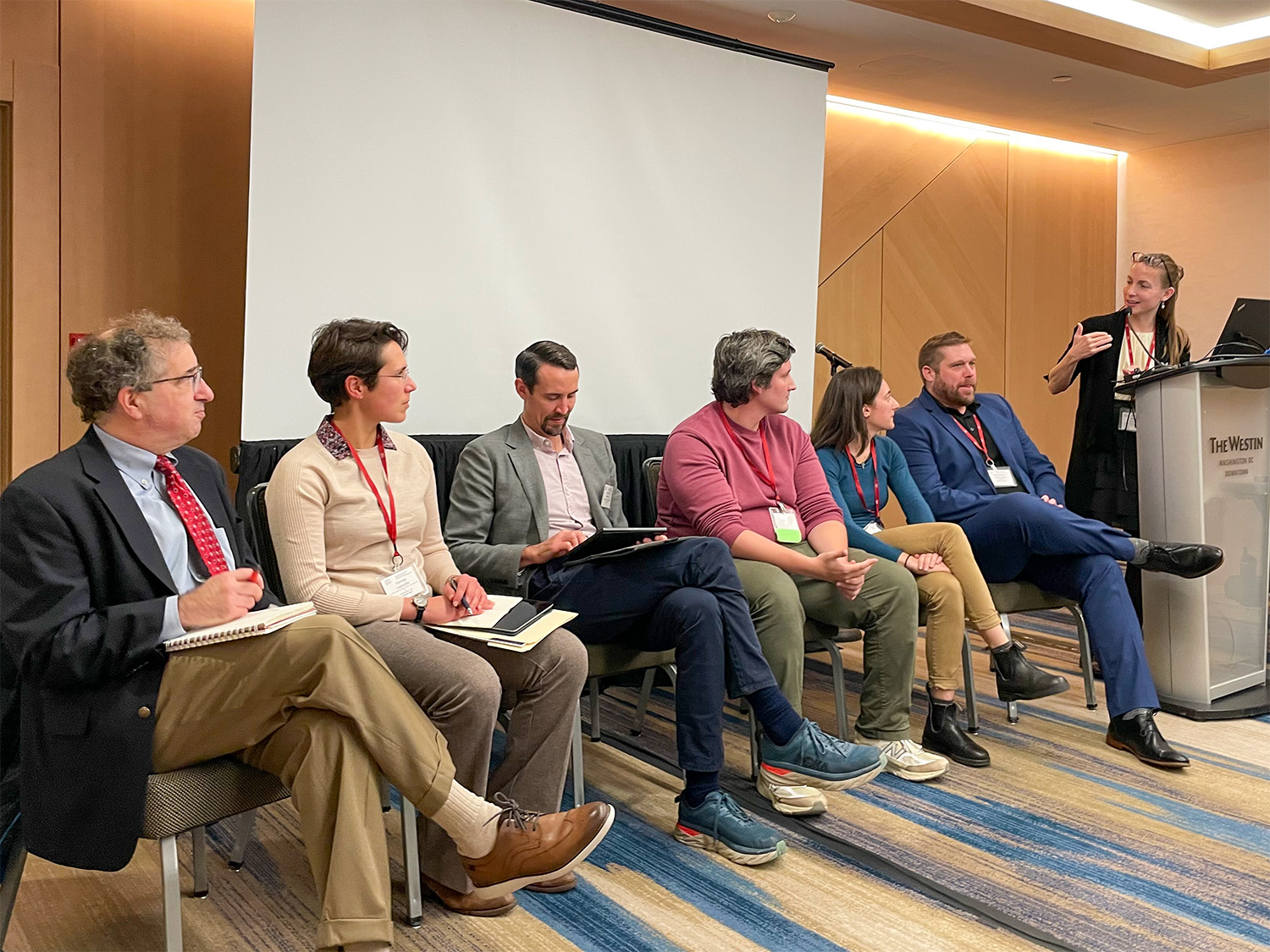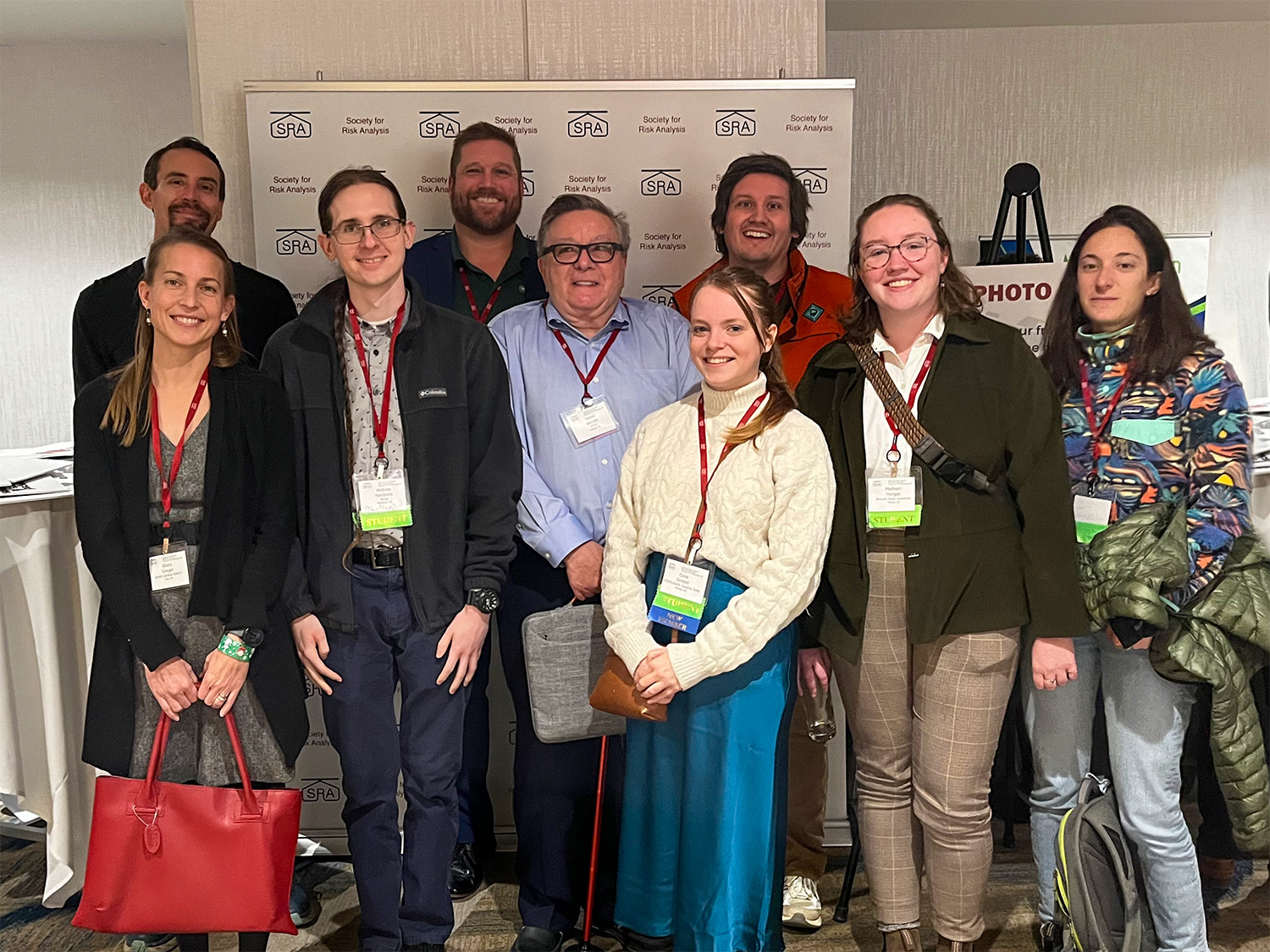
Written by: Khara Grieger, Nick Loschin, and Ilaria Cimadori
*Note: The opinions expressed in this article are those of the authors as individuals and should not be taken as a reflection of the views of the whole of the Genetic Engineering and Society Center or NC State University.
Innovative and novel biotechnologies applied across various sectors hold enormous potential to design and achieve more sustainable and resilient societies. Biotechnology involves a range of techniques to modify or engineer living organisms and includes fields of genetic engineering and genome editing to insert or modify specific genes or gene sequences (Van Eennaam, 2017; Khalil, 2020).
Among other areas, the development and innovation of agricultural biotechnologies are expected to improve food quality and nutrition as well as enhance sustainable agricultural practices. Recently, genetically engineered foods such as purple tomatoes have been modified for color, and mustard greens have been altered to improve flavor (Norfolk 2023; Pairwise 2024). There are currently several crops produced and sold in the U.S. that have been genetically modified, including alfalfa, apples, canola, corn, cotton, papaya, pink pineapple, potatoes, soybeans, squash, and sugar beets (FDA 2022A). Techniques for genetic modification and gene editing are also being used in animals such as the PRLR-SLICK cattle, which has been modified for heat tolerance (FDA 2022B), and AquAdvantage salmon, which grows faster than its non-modified counterpart (FDA 2023). Overall, advancements in biotechnology techniques and tools, along with the development of products, are occurring at a rapid pace.
The Biotech EO
To further promote the bioeconomy in the U.S., the Biden Administration issued an Executive Order (EO) on “Advancing Biotechnology and Biomanufacturing Innovation for a Sustainable, Safe, and Secure American Bioeconomy” on September 12, 2022 (Executive Order 14801, 2022). EOs are official documents written and signed by the President to manage the operations of the Federal Government, and they have been recently used to carry out policies. EOs have the force of law, but they are different from legislation as they do not require Congress’s action. The EO puts forward a strategic plan at the federal level to promote and invigorate biotechnology innovation in a range of sectors to advance research and development, commercialization, and educational programs alongside strategies to strengthen the U.S. bioeconomy and national security.
To realize the potential benefits of new biotechnologies across a range of areas and sectors while minimizing risks and unintended impacts, the EO proposes to advance the bioeconomy safely and sustainably. The EO also opens a policy window for key regulators to respond to various stakeholder inputs to modify the process, regulation, and oversight of these novel technologies. Given the importance of the EO on national strategic plans for biotechnology and the bioeconomy, GES AgBioFEWS students recently explored areas that may be improved to strengthen transparency and build public trust (Ferguson et al., 2023).
Roundtable Discussion at the SRA Annual Meeting

Download the PDF of the GES SRA presentation on the Biotech EO.
In December, GES-affiliated faculty and students participated in a roundtable discussion on the EO at the recent Society for Risk Analysis Annual Meeting, held in Washington, DC. The roundtable aimed to discuss the strengths and limitations of the recent EO on bio-innovation from interdisciplinary perspectives, highlighting aspects of biotechnology regulation and risk in particular. GES Executive Committee member Khara Grieger (NC State) organized and hosted the roundtable, with GES faculty Zack Brown (NC State) and Chris Cummings (Army Corp of Engineers, NC State) serving as panelists together with Greg Jaffe (USDA) and Georgia Lagoudas (former White House Office of Science and Technology Policy, OSTP). These senior-level experts in biotechnology policy were also joined by PhD students Nick Loschin (NC State) and Ilaria Cimadori (Yale).
During the roundtable, Khara Grieger kicked off the session by introducing the EO and outlining key components of sections related to regulation, risk, and safety. After the introduction, Georgia Lagoudas and Greg Jaffe presented their views of the EO, accomplishments after its first year of implementation, federal investments in the bioeconomy with a focus on food/ag systems and biosafety, and updates about biotech regulation, which, according to the speakers, need to be more efficient by being less resource-intensive for developers of biotech products. Next, Chris Cummings and Zack Brown shared their perspectives on strengthening the ethical, legal, and societal implications as well as economic aspects of the EO. Nick Loschin and Ilaria Cimadori discussed the importance of building transparency and trust in regulation and considering animal welfare in novel applications of genetic engineering in animals.
“It was fascinating to explore diverse viewpoints on the Biotech EO, along with the advancements achieved in its first year of implementation,” said Khara Griger when asked about the experience. “Our research team at NC State is keen on monitoring its evolution in the subsequent years, particularly in terms of risk assessment and safety updates, as well as issues of transparency and public trust. These aspects hold significant importance for us, aligning with the central issues we’ve been investigating within our research and other related studies associated with the GES Center.”

GES panel on the Biotech EO at the Society for Risk Analysis annual meeting, December 11, 2023, Washington, DC. Left to right: Greg Jaffe, Georgia Lagoudas, Zack Brown, Nick Loschin, Ilaria Cimadori, Christopher Cummings, and Khara Grieger (moderating)
The roundtable session concluded with an open Q&A with all panelists and attendees to discuss the EO and the role of regulation and safety moving forward. Questions from the audience were centered on the bioeconomy as a whole, with rich conversations about what the EO means for different sectors and what perspectives were important for these various groups. These conversations centered around what funding and investment would look like in the bioeconomy and what role the public plays in terms of engagement. While the discussion was focused on how the new EO is designed to push the development of biotechnology in multiple sectors, the speakers also focused on the potential legal, time, and resource constraints of the agencies in making adaptive changes to the current regulatory framework. Andrew Hardwick, an AgBioFEWS Fellow with the GES Center commented, “As part of the audience, it was fascinating to hear perspectives from both academics and individuals in regulatory agencies. This provided a valuable opportunity to compare theoretical concepts of oversight with the practical challenges of implementing regulations in real-world situations.” Throughout the discussion, the panelists highlighted the wide range of criteria that need to be considered when working in science-policy intersections. In conclusion, the Roundtable was an effective platform for discussing the EO on biotechnology from a range of perspectives, drawing from both senior experts and new students.

Left to right, back row: Zack Brown, Christopher Cummings, Nick Loschin; front row: Khara Grieger, Andrew Hardwick, David Berube, Corie Griebel, Madison Horgan, Illaria Cimadori
References
- Ferguson et al., 2023
- FDA 2022A
- FDA 2022B
- FDA 2023
- Khalil, 2020
- Norfolk 2023
- Pairwise 2024
- Van Eennaam 2017
Dr. Khara Grieger is an Assistant Professor and Extension Specialist in Environmental Health & Risk Assessment in the Department of Applied Ecology. She also serves as Project Director for a USDA/NIFA funded grant (grant number 2022-67023-36730), PI of the Interdisciplinary Risk Sciences program at NC State, Co-Director of Knowledge Transfer of NSF-funded Science and Technologies for Phosphorus Sustainability (STEPS) Center, and a member of the Executive Committee of the GES Center . She can be reached at kdgriege@ncsu.edu.
Nick Loschin is a 3rd year PhD student in the NSF-funded AgBioFEWS program led by the GES Center at NC State. Nick is studying parameters and processes involved in conducting environmental risk assessment of genetically engineered crops.
Ilaria Cimadori is a 3rd year PhD student at the Yale School of the Environment. Ilaria studies regulations of genetically engineered animals, and is conducting an international comparative law analysis